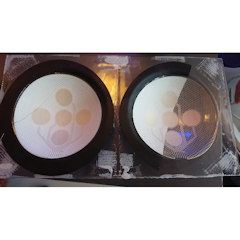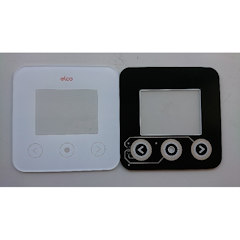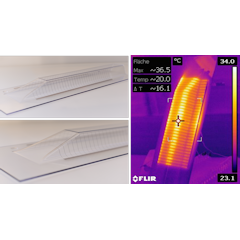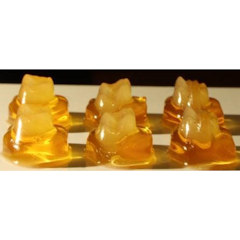3D printing is affecting the way engineers design in the automotive industry. The technology is already used in the industry, currently mostly for plastic and metal spare parts. Additive manufacturing has opened the door for newer designs, safer products, shorter lead times and lower costs. Moreover, it will be an enabler for the automotive industry to adapt towards the new smart mobility requirements.
With 3D printed electronics, even more applications are in sight. Engineers can now design the electronics to fit a certain part, rather than designing parts around electronics as before. The design is no longer limited to flat printed circuit boards, things get three-dimensional. Furthermore, electronics can be printed using a variety of techniques- inkjet, analog, so there is a lot of room for innovation.
Several companies in the market are already printing sensors, circuit boards, and more. We talked to a few of the speakers at the 3D Printing Electronics Conference, which is organised annually by Jakajima in Eindhoven, The Netherlands. They see a lot of potential for 3D printed electronics in the automotive field.
Replacing the buttons
Mahmoud Tavakoli, Professor at the University of Coimbra and Project Manager at the Institute of Systems and Robotics, Portugal: One of the areas where 3D printed electronics will find first applications is replacing the physical buttons. The automotive industry is trying to get rid of the old-fashioned and costly buttons and replace it with tactile buttons, and this is where printed electronics can help.

Mahmoud is researching novel methods and materials for printing stretchable circuits.
His team at the Institute of Systems and Robotics created the first ever method for inkjet printing of highly stretchable circuits and then adapted this method for screen printing as well.
Since these circuits are stretchable, they can be then transferred to non-developable 3D surfaces without losing conductivity, and they can act as an interface between human and the machine, as was shown in his recent articles[1][2].
3D Printed steering wheels?
Hans van de Mortel, Owner, Metafas, The Netherlands – One of the applications for 3D printed electronics with great potential is the steering wheel (picture).

A comparable application, which has already been implemented is smart thermostat. Atag One is one example that is already working. The front plate is equipped with capacitive buttons and printed electronics, as you can see in the picture.

Windscreens and heater patterns. Great potential for OEMS
Martin Hedges, Managing Director, Neotech AMT GmbH, Germany: It has great potential for OEMS. Flexible process chains can be easily reconfigured to cope with rapid changes in product type whilst retaining the ability to be scaled through to high volume manufacture.
Current emerging applications include:
- Cabin Interiors/Lighting – higher level of integration & automation, cost & weight saving
- Heater Patterns – weight reduction, added functionality
- Longer term – sensors, antenna…

Neotech AMT has been pioneering the development of 3D Printed Electronics since 2009. The company installed the first 5 axis 3D PE system in 2010. The speed that 3D printed electronics allow in product integration lead to the first commercial installation for mass production for printed 3D circuits in mobile communications devices in 2015.

A similar revolution as the step from black & white to full colour printing on paper
René van der Meer – Senior Printhead Architect – Océ, The Netherlands: I believe jetting multiple industrial grade materials will be the next step in 3D. A similar revolution as the step from black and white to full colour printing on paper.
It will allow 3D printing of materials with different properties, like insulating and conductive materials, soft and hard, flexible and stiff, monochrome and full colour, opaque and transparent. Combining MM3D jetting with traditional technologies (like pick-and-place, machining and also other additive manufacturing techniques) will open the world of hybrid 3D printing which allows too print a complete LED armature or even an artificial eye with an integrated camera. MM3D makes it possible to set-up local economies and saves CO2, transportation, waste, post processing, storage and transportation costs. It is the technology for Industry 4.0.
Océ-Technologies has been working within the Multi Material 3D field lab with TNO AMSYSTEMS Center, NextDent (since 2017 3D Systems) and TNO Brightlands Materials Center on an approach to 3D print artificial coloured teeth for dentures and crowns. First results were presented at The 3D Printing Electronics Conference 2019.

[1] P. A. Lopes, H. Paisana, A. T. De Almeida, C. Majidi, and M. Tavakoli, “Hydroprinted Electronics: Ultrathin Stretchable Ag-In-Ga E-Skin for Bioelectronics and Human-Machine Interaction,” ACS Appl. Mater. Interfaces, 2018.
[2] M. Tavakoli, M. H. Malakooti, H. Paisana, Y. Ohm, D. G. Marques, P. Alhais Lopes, A. P. Piedade, A. T. de Almeida, and C. Majidi, “EGaIn-Assisted Room-Temperature Sintering of Silver Nanoparticles for Stretchable, Inkjet-Printed, Thin-Film Electronics,” Adv. Mater., 2018.

